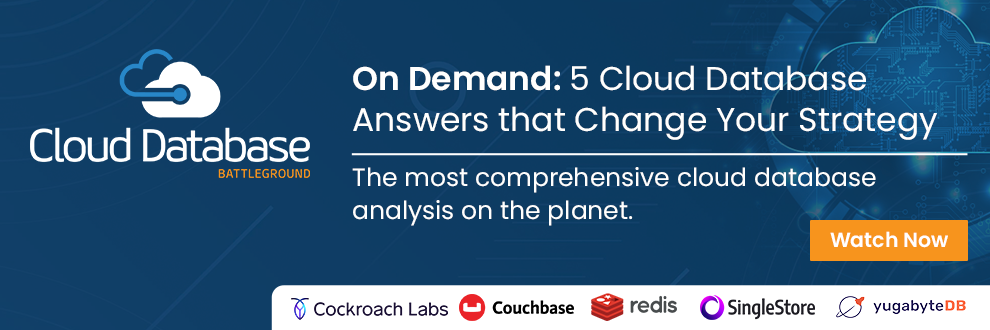
Managing data is becoming more complex as the types of data as well as the volume of data grows. In this roundtable discussion, David Kramer, the CEO of Cooperative Computing, discusses the concepts of data modernization with Acceleration Economy Analysts to deliver sage advice on how to modernize data and bring better control and improved value to large data sets.
Highlights
00:30 — Analysts Aaron Back, Kenny Mullican, Wayne Sadin, and John Foley discuss the topic of data modernization along with David Kramer, the CEO of Cooperative Computing.
02:01 — There are three key elements when it comes to modernizing data:
- The issues that can be exposed
- The overall cost implications
- The types of risks
The Dark Side of Data
02:30 — How can organizations turn the ‘dark side’ of data into something that’s more beneficial and strategic for them? There are key categories to these risks, such as:
- Duplicate data — How do you ensure this doesn’t occur?
- Missing data — What happens if the data you’re supposed to have doesn’t go through the transformation?
- Improperly formatted data — How do you recover from an improper transformation?
03:52 — When encountering the ‘dark side’ of data, businesses need to consider not only the level of awareness but also how to recover and learn from the situation moving forward. How will you apply this to future implementations?
04:23 — Data is everything in the future. So, how do we solve these issues and remove these risks? Don’t be afraid to throw away the first version—rather than attempting to rebuild on what you’ve had, implementing solutions is made easier now.
04:55 — The digital maturity model enables businesses to assess what went wrong. So, when they review the first version, they can be aware of adjustments to be made with the second version. Understand your master data, know your business’ use of that data, and identify who’s consuming that data.
The Cost Implications of Data Modernization
The CXO Perspective
06:02 — What are boards and CXOs trying to understand with data modernization? It’s about understanding your data and where you have gaps or changes.
06:40 — The timing of data is critical.
07:20 — The earlier you manage the quality of data, the better everything else is. When it comes to cost-efficiency, businesses need to consider which data to store and how to fill in gaps. Because this results in managing data costs, it’s essential to put quality control in place early.
The SMB Perspective
08:21 — Businesses need to have the right tools to help store, manage, and extrapolate information from the data. Which tools are the most cost-effective to utilize at the right times?
09:07 — For SMBs, data modernization can be easier in some ways. For instance, data might be used in only one department rather than a hundred different departments with a hundred different applications contributing to this data.
09:46 — However, SMBs still encounter the same issues so it’s beneficial to consider that earlier on. Although it’s painful to clean data, it’s especially worth it to make the transition to cloud databases or modern databases.
10:38 — SMBs face the challenge of having very small IT teams and usually can’t afford to bring in experts. So, when thinking about managing database systems, keep it as simple as possible.
The Risks of Data Modernization
11:31 — Data movement, migration, and modernization come with inherent risks. How is the risk versus reward balanced when leveraging modern cloud databases?
12:10 — With modern and cloud-native database platforms, there’s a trend towards self-managing databases.
12:53 — The business benefits of data modernization are fairly obvious: business agility, better decision making, improved customer experiences, and more.
13:07 — Businesses still need to watch out for the downsides, such as increased complexity when adding in new databases from new vendors. Additionally, businesses don’t want to add more data silos.
The Different Types of Risks
13:44 — Businesses also need to think about the unanticipated costs along with the new consumption-based pricing models. There are risk differences around managing these different databases.
16:02 — The first risk is the ability to pilot and do things quickly that you couldn’t do in the traditional world.
16:59 — The second is the ability to scale predictably.
18:22 — Integrations between new technologies need to be forward and backward thinking. Businesses have to think about legacy connectivity and future connectivity.
20:19 — Be prepared to fail fast, eliminate the risks, and repeat the process. Pilot test for today, test for tomorrow and continue testing for the future. How do businesses execute these strategies to set this in motion?
21:45 — The mindset is critical. You can’t operate today in modern environments with an old-school way of thinking.
Challenges to Consider
22:05 — CEOs and CIOs need to ensure they’re making better decisions and not get caught up in technical debt when undergoing data modernization.
23:41 — Every company has a new idea and a unique value proposition. Because there are also common themes, businesses need to identify what they’re especially good at.
24:52 — The trending direction of SMBs is dependent on what’s available and cost-efficient. So, there need to be companies prepared to work with the smaller companies as well.







